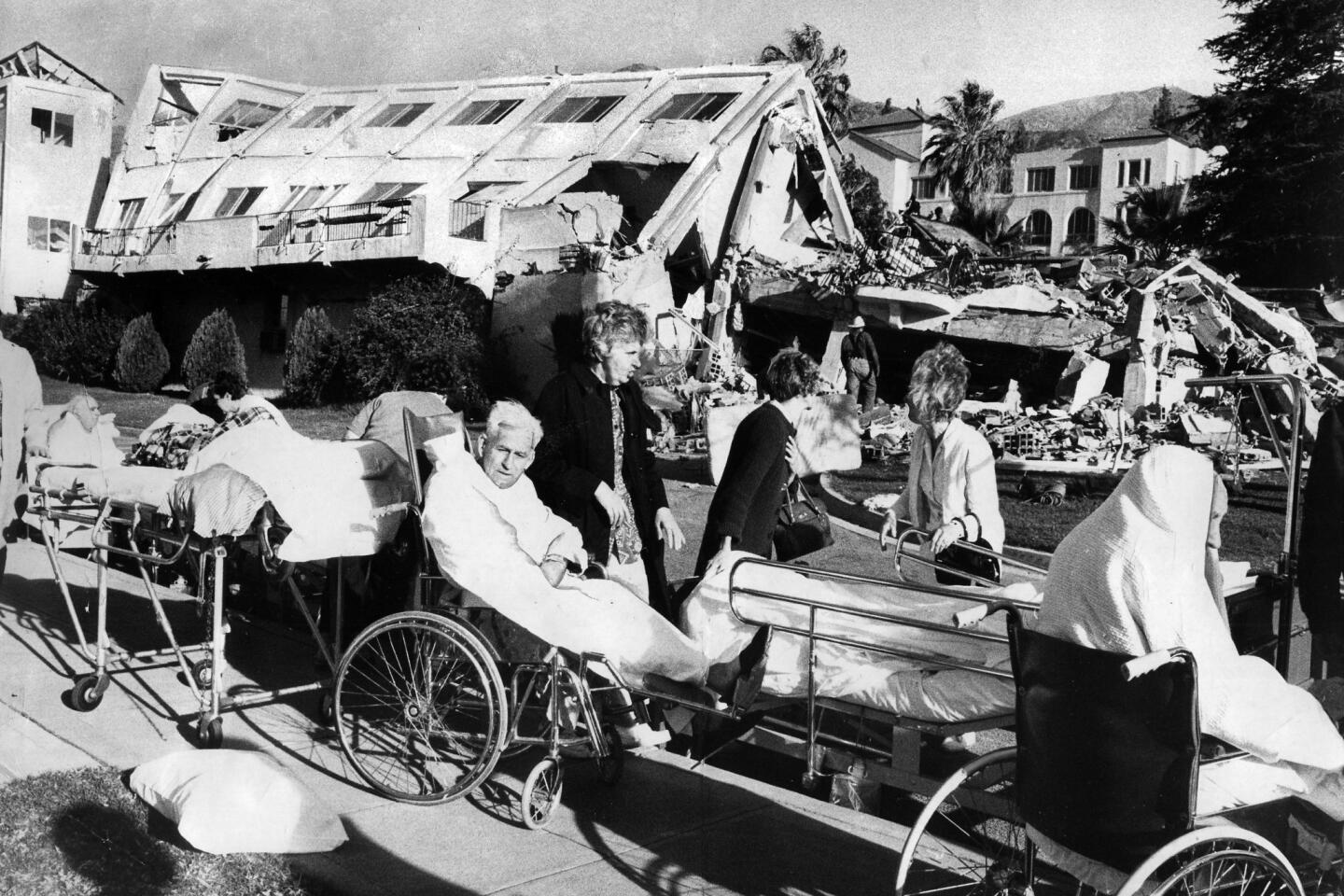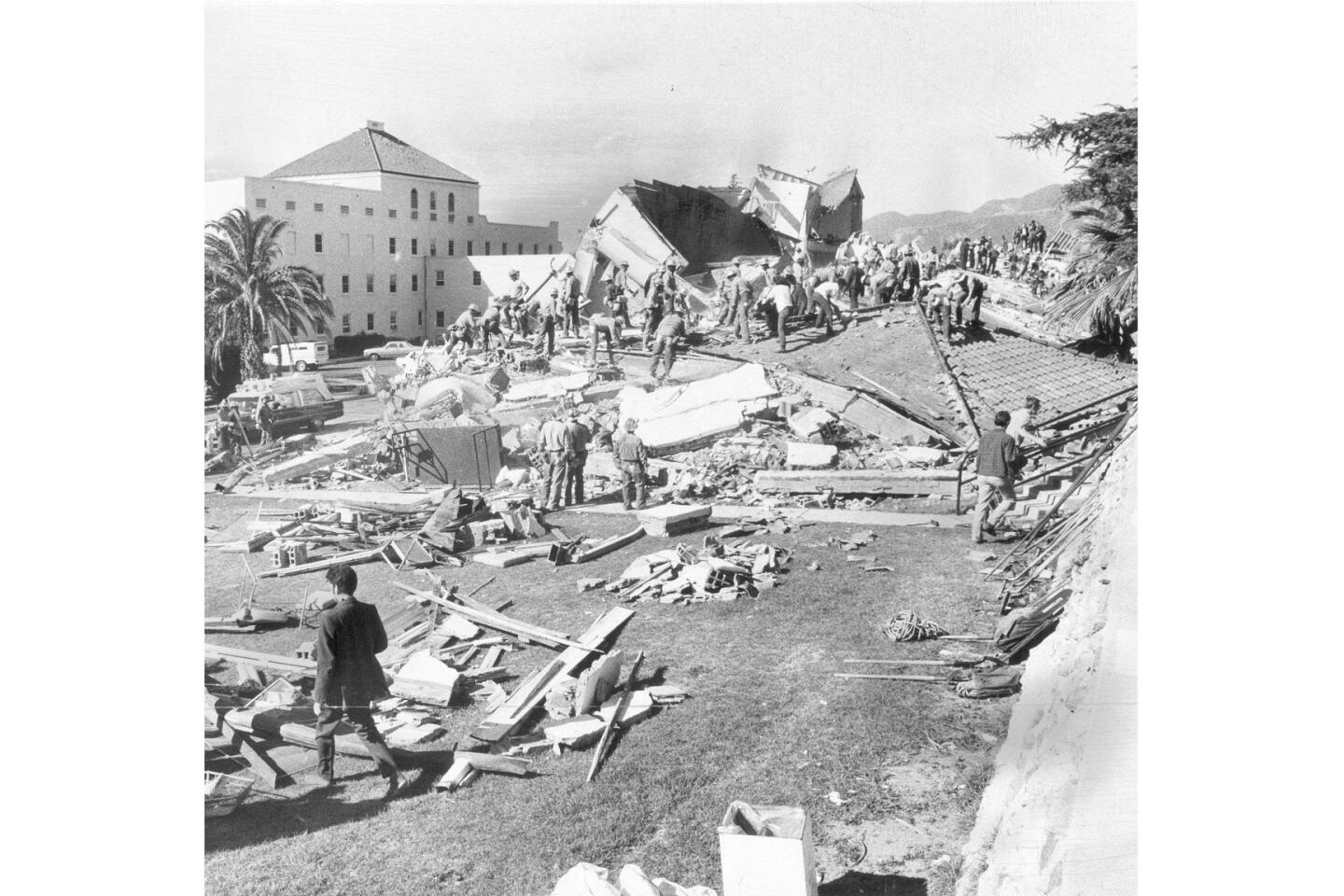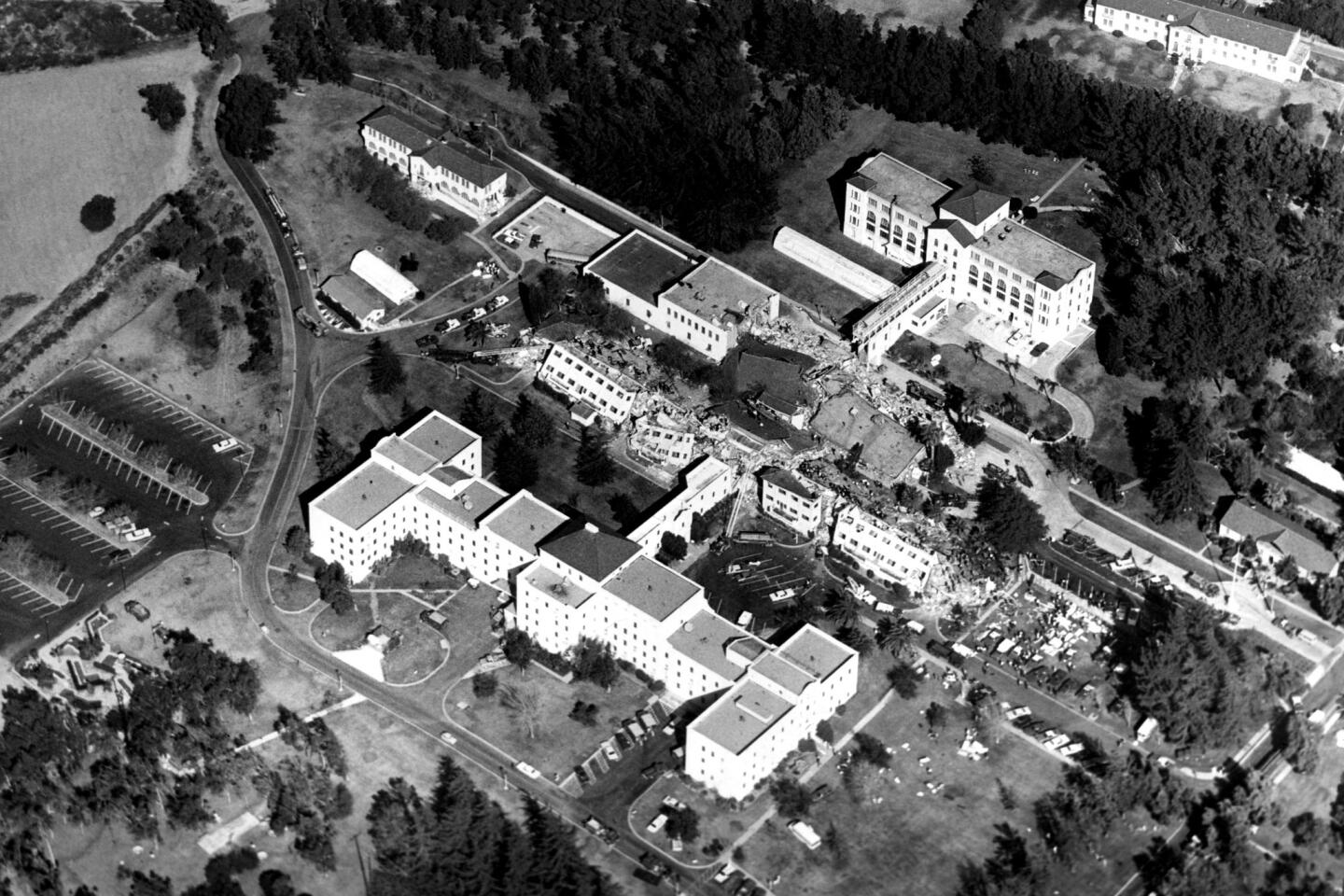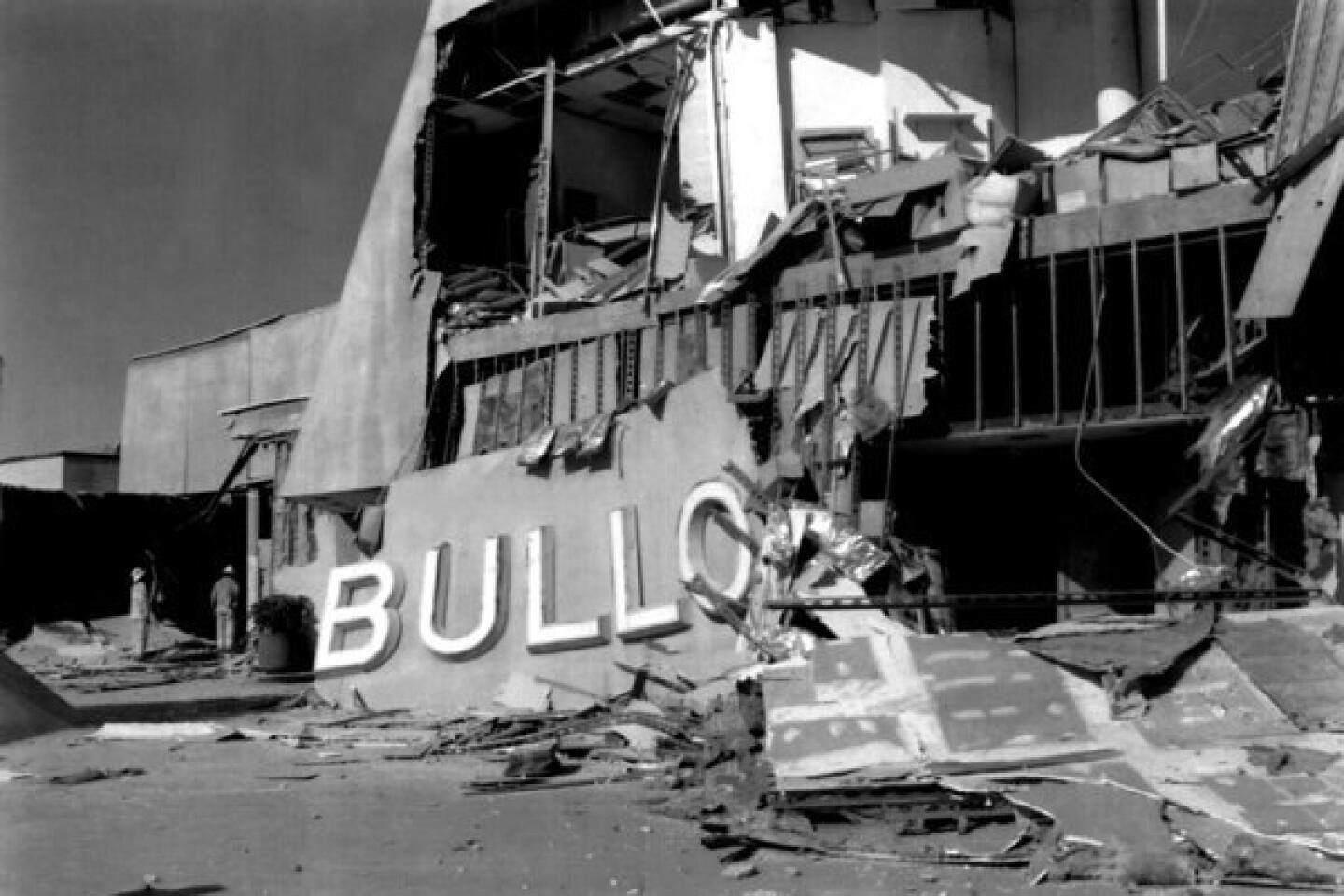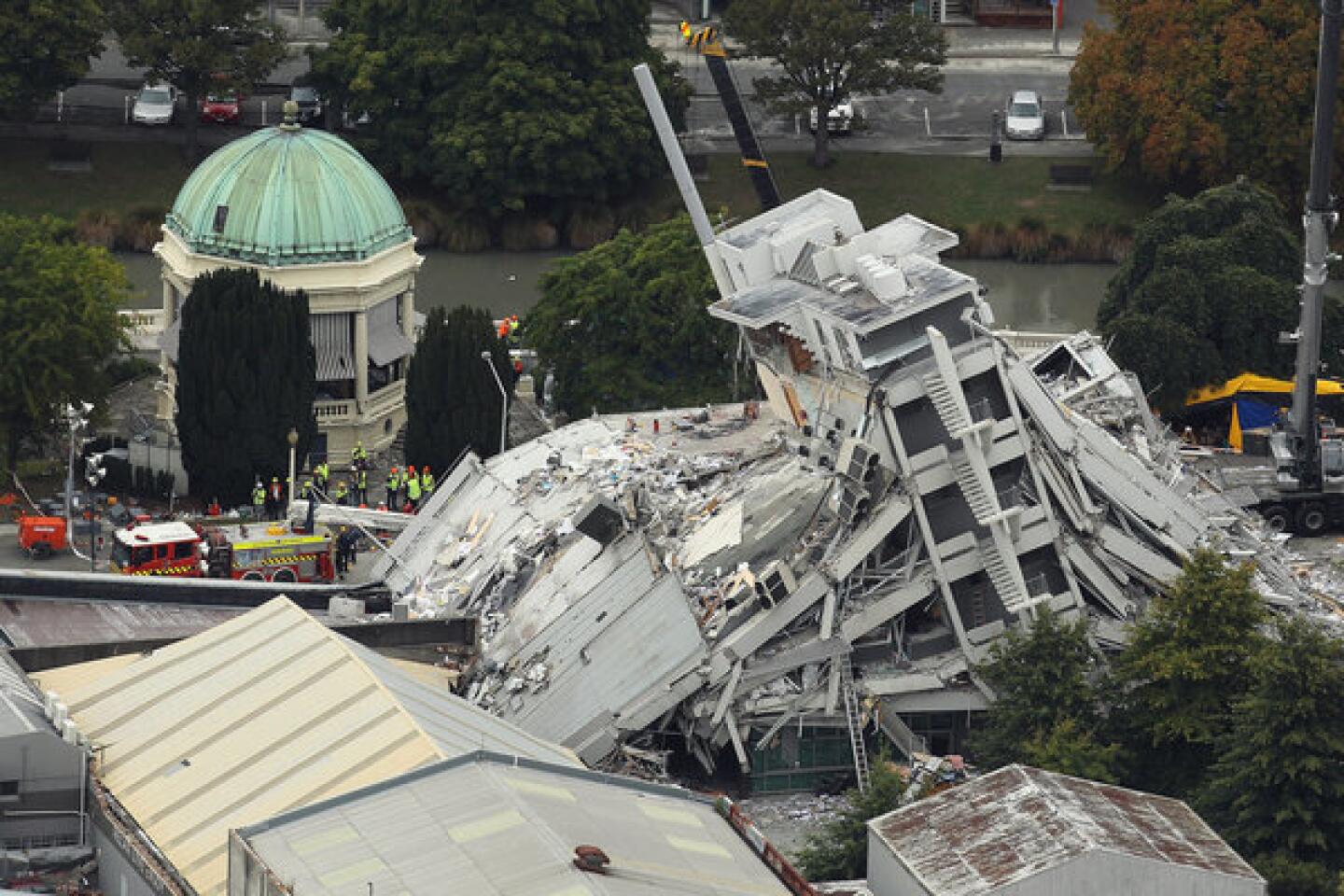Earthquake experts see the ‘Big One’ getting bigger
The “Big One” that has been forecast for the San Andreas fault could end up being bigger than earthquake experts previously thought.
Recent research showing that a section of the fault is long overdue for a major earthquake has some scientists saying the southern portion of the fault is capable of a magnitude 8.1 earthquake that could run 340 miles from Monterey County to the Salton Sea.
That’s significantly stronger and longer than the southern San Andreas’ last major rupture, in 1857. Such a temblor would cause much more damage because with a larger stretch of the fault rupturing, a larger area would be exposed to the quake and the shaking would last longer.
Whether such a quake would happen in our lifetime had been a subject of hot debate among scientists. That’s because until recently, experts believed that a part of the southern San Andreas that runs through the Carrizo Plain 100 miles northwest of Los Angeles would remain dormant for at least another century.
But that rosy hypothesis seemed to be shattered by an August report in the journal Geology by researchers at UC Irvine and Arizona State University, which said that even that section is far overdue for a major quake.
“The next earthquake could be sooner than later,” Lisa Grant Ludwig, a study coauthor and UC Irvine earthquake expert, said in August.
According to U.S. Geological Survey seismologist Lucy Jones, who was not involved in the study, it is possible that all 340 miles of the southern San Andreas could rupture.
Such a scenario would trigger a magnitude 8.1 earthquake, said Thomas Jordan, director of the Southern California Earthquake Center, a calculation with which Jones agreed.
“My concern is that we will get a series of large earthquakes along the San Andreas fault,” said Jordan, who also was not involved in the study.
Jones refers to such a megaquake as a “wall-to-wall” temblor.
The “walls” are the boundaries of the southern San Andreas, which begins in the Salton Sea and ends in Parkfield in Monterey County. Scientists consider the southern San Andreas as one segment because it behaves the same — it rarely rumbles, but when it is awakened, the shaking can be devastating.
In contrast, the section of the fault north of Parkfield up to Hollister in San Benito County behaves differently. That section moves at a constant creep; because stress is relieved regularly, large quakes don’t occur there.
The southern San Andreas hasn’t had a large quake for more than a century. The sleeping giant has been building stress for so long that it could snap at any moment, experts said.
Grant Ludwig said Saturday that such a wall-to-wall earthquake is not assured. But she said it’s “a possibility that should be considered and previously was not.”
The last Big One ripped through Southern California in 1857, when an estimated magnitude 7.9 quake ruptured 200 miles of fault between Monterey and San Bernardino counties. But it wasn’t a wall-to-wall quake: It stopped around the Cajon Pass, near the present-day 15 Freeway, probably because the fault south of that area had shaken just a few decades earlier, in 1812, Jones said. Because the 1812 quake had relieved tectonic tension in the Cajon Pass, it effectively stopped the 1857 quake from moving farther south.
“Can I imagine the 1857 earthquake happening again and stopping at the Cajon Pass? Probably not,” Jones said. “Once you have a big slip, you’re more likely to move along down the fault,” she said. “If the rupture has been made ... that’s a lot of momentum that will keep the rupture moving down the fault.”
A magnitude 8.1 wall-to-wall quake would release twice the energy of the 1857 temblor, Jordan said.
The San Andreas has long been considered one of the most dangerous faults in Southern California, in part because of its length. Not only do longer faults produce bigger quakes, but they also emit a type of shaking energy that can travel longer distances.
In addition to Grant Ludwig, the August report was written by Sinan Akciz of UC Irvine and J. Ramon Arrowsmith and Olaf Zielke of Arizona State.
More to Read
Sign up for Essential California
The most important California stories and recommendations in your inbox every morning.
You may occasionally receive promotional content from the Los Angeles Times.

